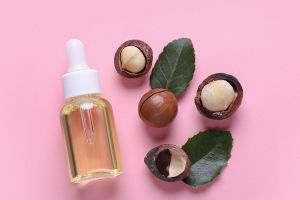Floral arrangement art is an art form that uses natural materials such as fresh flowers, leaves, fruits, and branches.
Through artistic design and processing, these materials are combined and arranged according to certain principles of aesthetic form, turning them into artworks with ornamental value.
This art form has a long history and a rich cultural connotation worldwide.
Floral arrangement is not just about the simple placement of flowers; it emphasizes the overall aesthetic of the composition, the coordination and harmony of color schemes, line combinations, and various other elements. The floral arrangement not only provides visual pleasure but also conveys the thoughts and emotions of the arranger, reflecting an attitude toward life and a pursuit of aesthetics.
Although the floral arrangement seems simple, doing it well requires specific skills. Here are some common techniques in floral arrangement:
1. Selecting Appropriate Materials
The choice of materials is fundamental to floral arrangement. When selecting flowers, one must consider their color, shape, size, texture, and longevity.
Generally, fresh, brightly colored, and pest-free flowers are ideal. It is also crucial to ensure harmony among the chosen materials, differentiating between primary and secondary materials. Typically, one or two types of primary flowers are selected, complemented by three to four kinds of secondary flowers and foliage to enrich the layers of the composition.
2. Paying Attention to Composition
The composition of floral arrangements should adhere to principles of aesthetic form, such as symmetry and balance, rhythm and harmony, unity and variation.
Common composition styles include triangular, curved, radiating, and vertical forms. Triangular compositions are stable and solemn, curved compositions are graceful and natural, radiating compositions are dynamic, and vertical compositions are simple and elegant. The choice of composition style depends on the theme and the emotions to be conveyed by the arrangement.
3. Processing the Materials
The floral arrangement requires the trimming, leaf removal, and de-thorning of materials.
When cutting flower stems, it is usually done at a 45-degree angle to increase the water absorption area, keeping the flowers fresh for a longer time. Depending on the composition, flowers may need to be bent, stretched, or fixed to achieve the ideal shape and angle.
Floral arrangement is not only an art form but also has multiple meanings:
1. Enhancing the Environment
Floral arrangements bring vitality and vibrancy to our living spaces. Whether in homes, offices, or public areas, floral arrangements can serve as decorations, adding beauty and comfort to the interiors. The colors, fragrance, and shape variations of fresh flowers can regulate people's emotions, reduce stress, and improve the quality of life.
2. Expressing Emotions
Floral arrangements hold different symbolic meanings in different cultures. In Western culture, roses symbolize love, while sunflowers represent passion and hope. Through floral arrangements, arrangers can express their inner feelings and convey blessings, care, or remembrance to others.
3. Fostering Harmony with Nature
Floral arrangement is a dialogue with nature. Through it, people can get close to nature and appreciate the beauty of flowers, plants, and trees.
In interacting with materials, arrangers experience the changing colors, shapes, and seasons of nature, which can foster harmonious coexistence with the natural world and evoke respect and love for nature.
4. Cultivating Aesthetic Ability
The floral arrangement requires the comprehensive use of color, shape, composition, and other artistic techniques, helping to cultivate the artistic literacy and aesthetic abilities of the arranger.
In the process, arrangers constantly think about how to better showcase the beauty of the materials and how to create unique artistic effects through different combinations and arrangements. This creative activity positively influences aesthetic awareness and artistic perception.
5. Promoting Physical and Mental Well-being
Floral arrangement is considered a therapeutic activity. When people focus on arranging flowers, their attention shifts away from worries and stress, leading to mental peace and joy. The floral arrangement also involves hands-on activities that help improve hand-eye coordination and alleviate anxiety and depression.
Floral arrangement is a unique art form that integrates natural beauty with humanistic beauty. It has ornamental value, rich cultural connotations, and spiritual significance. Floral arrangement is not just a skill but also an attitude toward life and cultural heritage — a creation and enjoyment of beauty. Through continuous learning and practice, everyone can find their pleasure and meaning in the art of floral arrangement.


